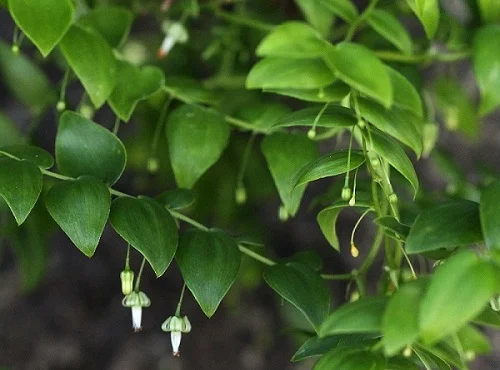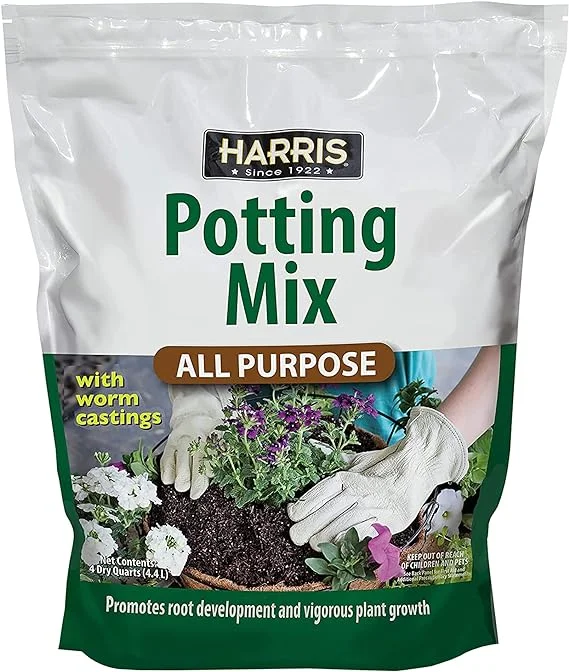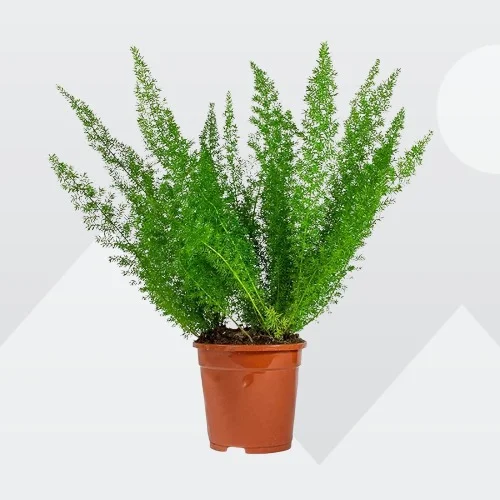12 Reasons Why Asparagus Fern Leaves are Yellowing and Dropping with Solutions
Some links in this post may be affiliate links
Asparagus Fern leaves may turn yellow and drop due to overwatering, underwatering, root-rot, pests, too little light, underfeeding, overfeeding, extreme temperatures among other reasons.
Mainly grown for their beautiful foliage, Asparagus Ferns are easy-care plants which you can grow in the home successfully. Nonetheless, Asparagus Ferns can develop problems if the growing conditions are not met. One of the commonest problem is yellowing and leaf drop (fall).
We have herebelow discussed 12 reasons why your Asparagus Fern leaves may turn yellow and drop to make it easier for you to save your plant.

12 Reasons Asparagus Fern Leaves are Turning Yellow and Falling
1. Poor Quality Soil
Poor quality soil does not drain easily and therefore it easily becomes compacted or soggy which can lead to root-rot disease. The disease is characterized by yellowing, browning, rotting, and loss of leaves.
Solutions
- Pot your Asparagus Fern in loose, free-draining soil that is rich in organic matter. These will ensure that the soil does not get soggy and it provides the nutrients required for lush growth.
2. Too Little Light
Light is needed for making food that is required for energy and growth. Insufficient light implies that the plant cannot make enough food for energy and growth.
In an attempt to save energy, the fern begins to yellow and drop its leaves. This way, it saves the available energy for the vital functions to keep alive.
Solutions
- Move your Asparagus Fern to a brighter spot where it can receive medium to bright indirect light or instal a grow light if you do not have adequate lighting in your home.
- Regularly turn the pot to ensure that the fern absorbs enough light for photosynthesis on all sides for uniform growth to prevent unbalanced growth.
3. Pest Infestations
Asparagus Fern is prone to spider mites, whiteflies, mealybugs and aphids whose infestation is promoted by underwatering or dry air.
These pests attack the new growth from where they suck the plant sap. This causes the plant to become dehydrated and results in wilting, yellowing and shedding leaves.
Solutions
- Isolate the affected fern to prevent spread to the other plants.
- Treat the infested fern with neem oil or insecticidal soap as per the manufacturer's recommendations.
- Regularly inspect the fern for the pests and take timely control measures.
- Keep the plant properly pruned to discourage pest infestation.

4. Underfeeding
Underfeeding your Asparagus Fern implies that the plant is not getting enough nutrients need for growth and energy. Inadequate nutrients in the actively growing tips causes nutrients to be withdrawn from the older lower leaves which begin to yellow and drop.
Solutions
- Feed your Asparagus Fern with a balanced, liquid fertilizer every 2-3 weeks during the growing season (spring and summer). Take care not to underfeed and follow the instructions on the label of the plant food.
- Do not feed it in fall and winter as growth is minimal at this time to prevent fertilizer burn.
5. Overwatering
Overwatering your Asparagus Fern results in soggy soil. Too much water in the soil reduces the oxygen concentration in the rootzone and this causes the thick, tuberous roots to die.
When roots die, they cannot take up water and nutrients needed for the food making process. Therefore, the plant does not make enough food for growth and energy. In a bid to save energy, the fern begins to yellow and shed its leaves.
Solutions
- To avoid getting soggy soil, ensure that the pot for your Asparagus Fern has a drainage hole and that the soil is loose and free-draining.
- In addition, reduce watering during the cold season to maintain the soil slightly moist as growth is minimal at this time.
6. Underwatering
When the Asparagus Fern is underwatered, there is little moisture in the soil. As such, the plant cannot take up nutrients and water needed for photosynthesis (food making process).
Since the plant does not get adequate food for growth and energy, it begins to turn yellow and eventually dropping neddles inorder to save energy.
Solutions
- Water the Asparagus Fern immediately and it should recover.
- Water the fern liberally during the growing season and allow the top 2-3 inches of soil to dry out between waterings.
- Reduce watering during the cold season as growth is minimal at this time but do not allow the soil to dry out completely.

7. Extreme Temperatures
Extreme temperatures; either too high or too low will affect the normal functioning of the plant systems.
Too high temperatures will cause excessive loss of water leading to wilting, yellowing and leaf drop. Too low temperatures will result in stunted growth, yellowing and leaf drop.
Solutions
- Keep your Asparagus Fern away from cold drafts coming from drafty winds, AC vents, open doors and others to avoid very low temperatures.
- Place the fern away from hot drafts emanating from hot surfaces, hot air vents and other heat sources to prevent extremely high temperatures.
- Maintain an average warmth of 16-280C. Usually, a room temperature that is comfortable for you is ideal for the fern.
8. Too Cold Water
Asparagus Fern is native to the tropical regions where the temperatures remain constantly warm. Therefore, constantly watering these plants with too cold water will shock them and will respond with yellowing and loss of leaves.
Solutions
- Water your Asparagus Fern with water that is at room temperature to avoid shocking these tropical plants.
9. Overfeeding
Overfeeding your Asparagus Fern will cause the roots to die due to fertilizer burn. When the roots die, they cannot take up nutrients and water required for photosynthesis.
Without, adequate food for growth and energy, the fern begins to turn yellow followed by shedding leaves inorder to save the available energy.
Solutions
- Take care not to overfeed. Feed your Asparagus Fern every 2-3 weeks during the growing season with a balanced, liquid fertilizer.
- Do not feed it during the cold season as growth is minimal to prevent fertilizer burn.
- Regularly flush out the salts from the soil by running a stream of water through the soil until it comes out through the drainage holes.

10. Root-rot Disease
Asparagus Fern is prone to root-rot disease which is prevalent in soggy soil. The disease is characterized by yellowing and wilting of the leaves which is rapidly followed by browning and plant collapse.
Soggy soil reduces oxygen concentration in the soil which causes the roots to die. Once the roots die, they cannot take up water and nutrients to the leaves. The leaves begin to wilt, yellow and eventually drop.
Solutions
- Slip the Asparagus Fern out of its pot and inspect the roots.
- Trim brown-black mushy roots and treat the healthy roots with a fungicidal solution as per the manufacturer's recommendations.
- Disinfect the pot with the fungicidal solution or use a fresh pot to repot the plant in fresh free-draining soil.
- Do not water the fern and keep it dry for some time before you can resume watering.
- Use a pot with a drainage hole and well-draining soil to prevent the soil from getting soggy.
- Lessen watering in fall and winter as growth is slowed at this time; keep the soil slightly moist.
11. Being Root-bound
A root bound Asparagus Fern is one whose roots have filled the pot and there is very little soil to hold water when you water the plant. Therefore, there is no water for the plant to take up to the leaves. The leaves lose their stiffness, wilt, turn yellow and drop.
Solutions
- Check the bottom of the pot for roots growing through the drainage hole.
- Repot the Asparagus Fern into a pot one size larger than the current one and ensure that the pot has a drainage hole to prevent the soil from getting soggy. Take a look at these pots with dainage holes on Amazon.
- You may divide a large Asparagus Fern into several sections and plant the sections in individual pots to propagate new plants.
12. Repotting Shock
Repotting Asparagus Fern may cause it some transplanting shock which may lead to some leaves wilting and dropping before it can adjust to the new growing conditions.
Solutions
- To minimize repotting shock, water your Asparagus Fern thoroughly one day before repotting. A well hydrated plant experiences less shock and is easier to divide.
- Do not make too many changes at once. For instance, after repotting, maintain the fern in the same location until it is well established before moving it to a new location.
You liked it? Share on social media.
Related Content
Amazon Associates Disclosure
Homeplantsguide.com is a participant in the Amazon Services LLC Associates Program, an affiliate advertising program designed to provide a means for sites to earn advertising fees by advertising and linking to amazon.com.





